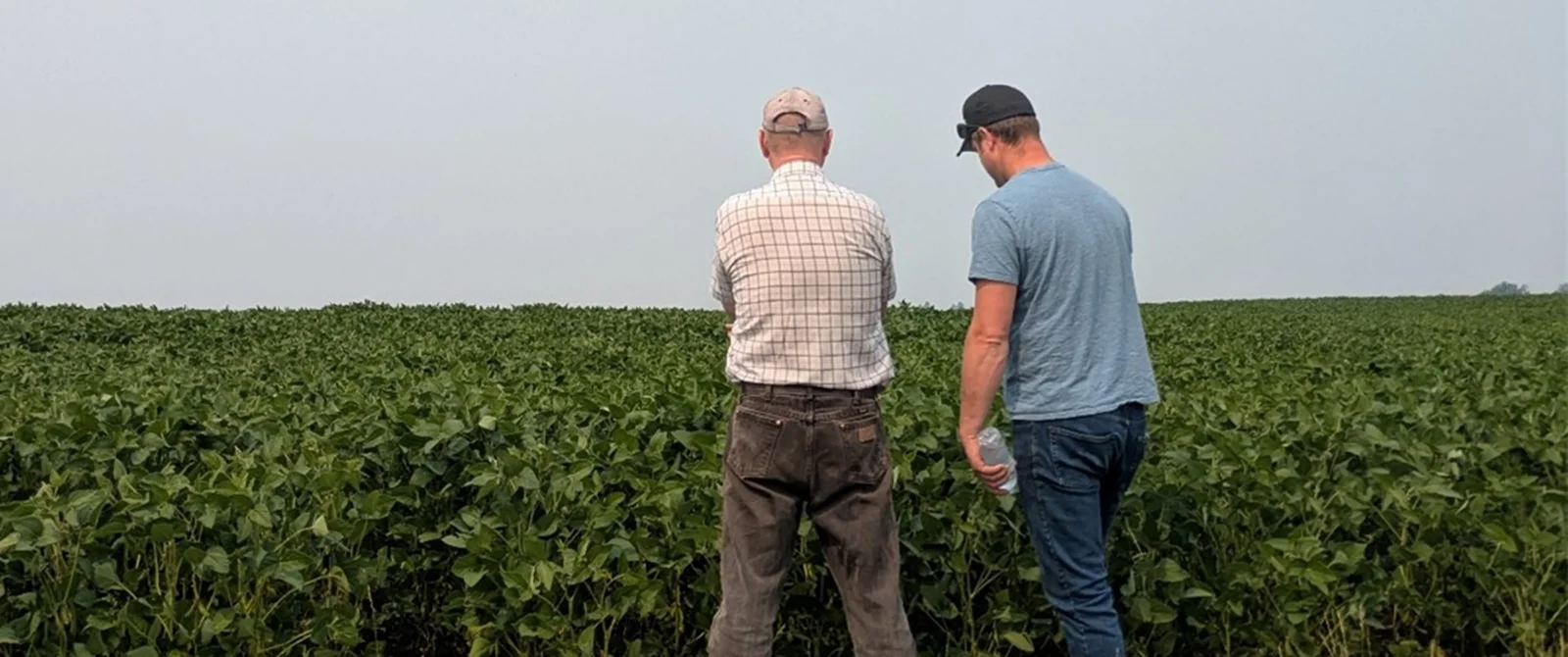Originally published in Lake of the Woods Area News, Volume 55, Number 5, Winter 2025
Since spring, the Lake of the Woods Water Sustainability Foundation (LOWWSF) has been leading the development of a Canadian domestic phosphorus management plan (PMP) for the Rainy–Lake of the Woods watershed. Supported by the Canada Water Agency’s Freshwater Ecosystem Initiative, this collaborative effort brings together communities, Indigenous governments, stakeholders, and scientists to better understand and reduce phosphorus, the nutrient fuelling nuisance and harmful algal blooms in Lake of the Woods.
Lake of the Woods continues to experience recurring, toxin-producing algal blooms driven by excess phosphorus (P). These blooms threaten drinking water, recreation, and ecosystem health. Phosphorus enters the watershed from both point sources (direct, measurable discharges) and non-point sources (diffuse runoff and erosion). Research by Environment and Climate Change Canada and the Minnesota Pollution Control Agency shows that roughly half of the lake’s external phosphorus load originates from the Rainy River, which carries both natural and human-derived inputs.
While the Rainy River has improved dramatically since the 1960s, when the International Joint Commission created the Rainy River Pollution Control Board to address severe pollution, legacy P remains trapped in lakebed sediments in the south basin. Each winter, it becomes buried beneath ice and is resuspended during open-water seasons. Because the lake naturally flushes at a rate of only about 1 per cent per year, it will take decades for phosphorus levels to fall below thresholds that trigger blooms.
Point-source progress
Over the past season, LOWWSF has completed much of its point-source research and fieldwork. Site visits to wastewater treatment plants and industrial facilities across the basin showed that most are meeting phosphorus discharge limits, with effluent concentrations averaging about 1 mg/L or less. The closure of the Fort Frances paper mill in 2014 reduced Canadian point-source loads by roughly 97 per cent, resulting in a 43.5-tonne annual decrease, which was a major success for P reduction. Industrial facilities such as the New Gold mine near Rainy River also remain in full compliance with environmental permits.
LOWWSF has begun drafting the point-source section of the PMP, which will guide future actions and identify opportunities for continued improvement.
Non-point source progress
The Rainy River basin is one of the most agriculturally active regions of the watershed, with fertile clay soils and established farms that contribute substantially to the local economy. About 20 per cent of the basin’s land area is used for agriculture, and recent shifts toward more intensive cropping (e.g. soya beans, canola, winter wheat, and corn) and tile drainage have increased interest in how phosphorus moves across the landscape.
This summer, our team carried out field visits across the Rainy River district, meeting with farmers, producer associations, and agricultural specialists. These visits offered valuable opportunities to learn directly from producers about fertilizer use, soil management, and drainage practices, as well as to observe firsthand how water flows through fields and ditches throughout the seasons. We discussed both challenges and innovations, from buffer strips and cover crops to precision nutrient management, that are already helping to reduce P runoff. It was encouraging to find common ground: producers recognize P as essential to their operations and are actively implementing practices to balance soil fertility, minimize runoff, and maintain healthy water retention and drainage.
One important pathway of P movement is tile drainage, which helps manage excess water on heavy soils but can also transport dissolved nutrients during spring melt or heavy rainfall. Dr. Catherine Eimers and her team at Trent University are studying this process in partnership with local producers to optimize drainage design and timing to reduce nutrient loss while maintaining productivity.
LOWWSF will also continue working with forestry experts and land-use planners to understand how activities such as road building, harvesting, and development influence runoff and sediment transport.

Looking ahead
The PMP combines findings from both point- and non-point-source research to guide coordinated action on phosphorus reduction. Aligned with Minnesota’s Total Maximum Daily Load (TMDL) plan, it supports shared binational goals for cleaner water.
Guided by our Steering Committee and Indigenous Engagement Committee, the plan integrates Western science and Indigenous knowledge to ensure that multiple ways of knowing inform each step. By addressing both regulated discharges and broader land-based sources, we can foster a cleaner, healthier, and more resilient Lake of the Woods, protecting the waters that sustain our communities, recreation, and quality of life for generations to come.
We welcome continued input as this work progresses. To learn more or get involved, visit lowwsf.com/our-work/a-plan/domestic-pmp or contact meghanmills@lowwsf.com.
